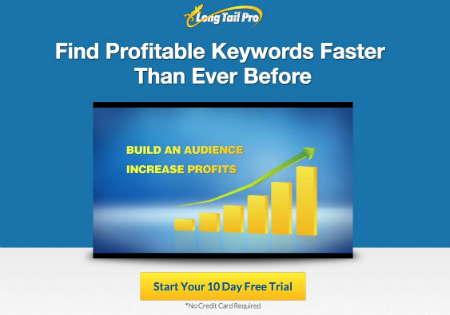Once upon a time, all you had to do to enhance your SEO was include as many buzzwords as you could think of within your website, but search engines have advanced far beyond that point now.

General keywords won’t cut it any more: you need relevant and intuitive phrasing in your content to ensure that you make the first page of search results, otherwise you’ll be lost in a sea of mediocre websites, desperately trying to climb the ranks of the likes of Google and Bing, but never succeeding.
This may seem intimidating, or even blatantly confusing, because how do you discern a general keyword from an expertly picked one? Luckily, semantic SEO is here to help, and this article should walk you through everything you need to know in order to become an expert.
Semantic SEO
First of all, what does ‘semantic SEO’ even mean? Well, it turns out that semantic SEO is working extra meaning into the words that you use in your content, specifically selecting them and going through processes to make sure that you’re making use of every word.
Using semantic SEO, you’ll be answering a searcher’s first, second and third questions, maybe before they’ve even thought of them! Search engines will love your content because it includes the right amount of meta data and specifics for them to be able to steer the right searchers to your content – if you’re not specific, then how can the algorithms know if a searcher would benefit from your website?
They can’t, so ignoring semantic SEO means that you’ll most likely be ignored as well.
Semantic SEO isn’t just a fancier way to dress up your content, it’s the way forward for websites, and you don’t want to be left behind by the major search engines – you’ll alienate all of your customers trying to find you on the internet.
You’ve obviously heard about the major methods of attracting traffic, such as backlinks, but semantic SEO really is the future of SEO as a whole.
No more clogging up your website with meaningless words; every word has to count, and you need to be as concise as possible while answering any questions the customer may have. It’s a tricky business, but it’s definitely not impossible!
How Does It Affect SEO?

That’s all well and good, but why can you actually not just go back to your old SEO tricks and tips, and move on with your website the same as it’s always been?
There are quite a few reasons, but one of the simplest to address and understand is the rise of speech recognition technology. You must’ve noticed more and more people talking to their phones – and even laptops or computers! – instead of just typing in a search (Siri from Apple and Cortana from Microsoft are popular examples), and this isn’t just a coincidence.
Research from Stone Temple Consulting shows that thirty-three percent (a third) of high-income households ‘frequently or very frequently’ use voice commands instead of typing, tapping or using remote controllers, and that number is rising all the time.

If someone asks their phone a question, they’ve likely not got time to stick around and read through your unwieldy paragraphs of jargon to get to the information they want – they need clear but in-depth answers there and then, which will more than likely be read back to them by the machine they’re using, so they have to be fairly easy to understand upon a first hearing.
Being an expert is brilliant – being able to use technical language is brilliant – but you need to know how to use it effectively, and when to curb it in order to appeal to your target audience.
Another reason why traditional SEO isn’t doing so well in the face of semantic SEO is that people are tending towards searching for general topics, instead of keywords, and traditional SEO does rely on keywords.

Your content needs to be structured in a better way, so that users don’t get lost when navigating your content. A hundred mini articles are useless if a user only finds ten of them, while a comprehensive ‘ultimate guide’ or ‘how to’ will be much more useful and accessible.
Instead of focusing entirely on what you’re putting into each piece of content – although creating original and thoughtful content is very important – spare some thought for structure of your content, and how it’ll be organised, because you’ll work much better with semantic SEO if you limit the sheer number of links which a search engine has to deal with from your website.
Instead of clogging up the third and fourth pages of Google, you could just have one expertly written guide topping the results with a mixture of details and clarity, and just enough relevant keywords to not become too heavy, but still be useful. It’s a delicate balance, but it definitely pays off in the end when your traffic stats begin to shoot upwards.
Following on from that point, thinking of your visitors’ intent instead of just the keywords which they might search is also a good idea. Every visitor to your website is there for a reason – you just have to find out what that reason is, and make it work in your favor, so if you can find out the queries which are leading visitors to your website, then you’ll be able to work out their intent through common sense and deduction.
Write down all the keywords and searches which people are making to get to your website, then separate them into groups based on the intent. For example, ‘where can I buy iPhone 11’ and ‘best prices Huawei P30 Pro’ both have the intent of purchasing behind them, so you should be creating content related to buying smartphones and even creating a section of your website dedicated to it, if you haven’t already.
How To Write Content Using Semantic SEO?

To start writing with semantic SEO in mind, it’s advisable to think of a wide vocabulary of words and phrases which relate to the topics you’re going to be writing on before you even start writing.
Including the questions which customers often ask – or the search queries related to this topic which you have found through the previous step are leading customers to your website – in this vocabulary is a good idea, because, at the end of the day, it all relates to your topic, and the topic is what’s important here.
Think about your writing as if you were writing on a Wiki for the topic, and you had to keep relevant as well as fairly concise – this should help you to get in the right headspace for writing semantic SEO based content.
From your vocabulary, you’ll have to be picky, because you don’t really need every single word – that’ll clog up your content, and, as we know, that’s no good for semantic SEO.

Think to the topic you’re specifically writing about, and be critical here! Only choose keywords which have depth and meaning to them, and demonstrate specifics about your area of expertise without alienating your target audience. If it’s a two-dimensional keyword and it doesn’t give you any more meaning than its face value, then bin it!
There are words out there which will give your content depth, and keep it ranking high on semantic search engines, so go through each of your keywords and improve upon or brainstorm with them, until you have the absolute best vocabulary you can, all ready and set to go. These are the words which you’ll actually be using in your content, and they are the words which the search engines will pick up on and be able to direct viewers to your website because of.

Considering the actual AI behind semantic search engines is also a good idea. Although Google has gone through a few different systems on its path to semantic SEO understanding, it has brought out RankBrain, released in 2015, which is the most competent yet. It doesn’t just rank pages in its search results – it analyses search queries and learns from what users do.
In this way, it’s managed to match up useful websites and users’ queries even when the queries don’t contain the exact words from the website, or vice versa. This just proves how far SEO has come, beyond just desperately trying to guess what words your visitors were going to be searching. Now, RankBrain can make sure that your visitors are directed to your website because it will be useful to them, and it has learned that off similar search queries, so the method is almost faultless. Even the algorithms are taking user intent into account, and making it their own focus, so you have to now understand why intent should be at the heart of everything you write.
How to Perform Semantic Optimization of a Website?

While content writing does need to improve and adapt to accommodate semantic SEO and move on in the online world, your website also needs to be optimized – and not just the content. Technical aspects of the website do matter, and they need to be kept on top of.
Despite the general movement away from keywords, they can help out sometimes just to lead unsure visitors in the right direction. Titles, meta tags, URLS and headers are all good places for some keywords, but make sure that they sound natural, otherwise your entire website could be ignored as ‘pages of unreadable jargon’ by a potential customer. Don’t alienate, just guide.

Backlinks are still a brilliant way to get your website noticed, and more traffic means you’re doing something right. Internal linking can work for websites with lots of content, as long as you try and keep the links relevant to the current piece of content, and don’t direct visitors to old, outdated content if you can help it – no one likes going from a sleek, well-written piece of content to a paragraph filled with errors, old information and that all-important timestamp, all just giving your website a dodgy and dishonest appearance, putting visitors on edge.
The content which you can create strong linking structures within should be your focus, and that should be content where links feel natural – not an article on a very singular subject, but maybe a ‘how-to’ where there are other elements you haven’t discussed but which might affect a viewer if they have problems or queries in that area. Therefore, they’ll follow the link and find more relevant information, creating a strong linking structure which works, and exists for a good reason.
However, you have to be careful with links. Without regular upkeep, you could find some of the links – especially to websites you don’t own or manage, or your links on different websites – no longer working, and end up sending your visitors down rabbit holes of error pages and broken links. Regular testing and communication with the websites you backlink with should help to prevent this, as well as some form of visitor communication (a comments or suggestions form, for example) which always helps to get rid of more obscure bugs, which you might never even think of – visitors always seem to find them!
And finally, you have to make sure that your website structure makes sense, and, if possible, is logical enough to appear in the search engine results. Having a spider web of a site map is not a good look, so try and keep pages under control and within certain sections, so that search engines can understand your content and display it in a better way – you may have seen sites with subsections beneath their search result, and noticed that it does look very professional.
Having a site structure which makes sense will allow this to happen for your website, and also give your customers an easier experience when trying to get around. The last thing you want is them getting lost in the middle of all your content, unable to find a main page to get back to! Semantic SEO is a wonderful tool to get into, so make sure that you don’t wound yourself in these other important areas, giving it the full potential that it deserves.
About the Author

Michael Dehoyos is a content marketer and editor at PhD Kingdom. He assists companies in their marketing strategy concepts, and contributes to numerous sites and publications.




